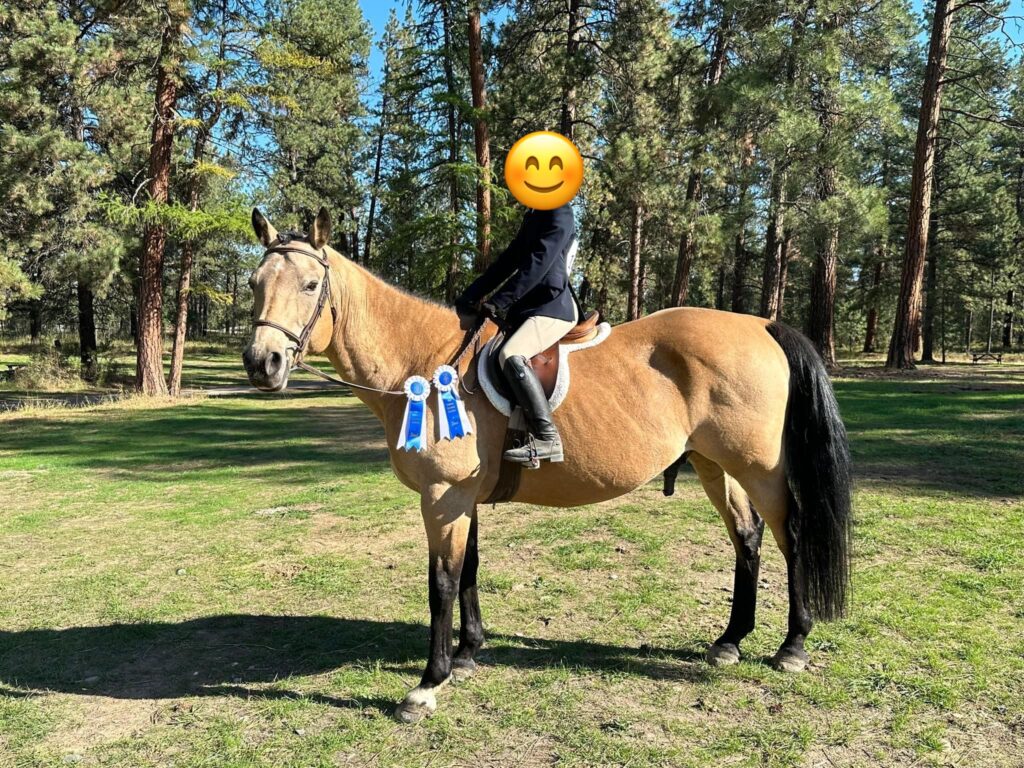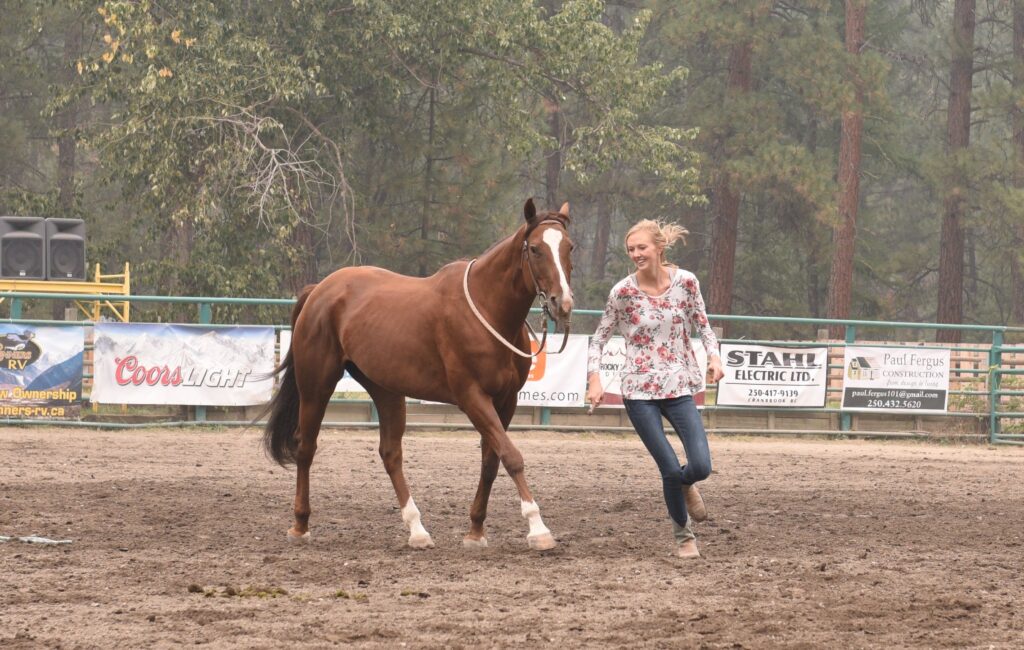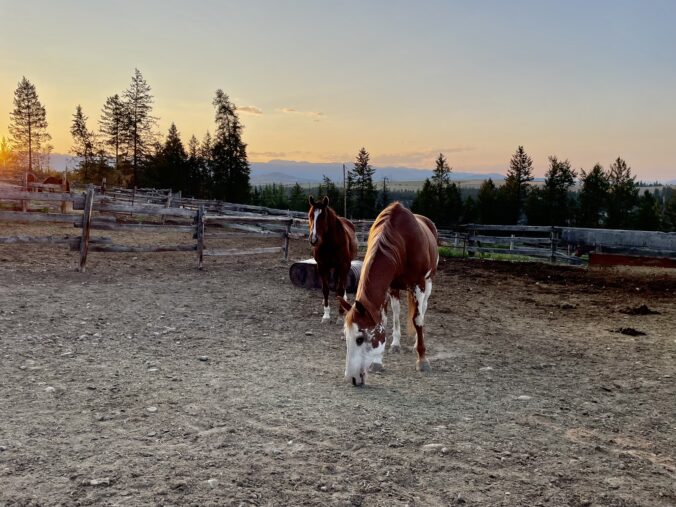Equine Assisted Therapies
This week’s focus is on Equine Assisted Therapies, a topic we will focus on for two weeks, because it is so important!
Equine assisted therapy is a therapy session with a licenced professional, as well as with an equine specialist. Equine therapy is used to treat a wide range of mental health conditions, including ADHD, eating disorders, addiction, anxiety and depression. Research shows that working with horses can benefit humans overall mental wellbeing.
As discussed with equine assisted learning, horses are incredibly intune with humans body language, they are also very attuned to human emotions. Last week, I saw an example of this. I was going for a ride alone at an arena in town, and taking two horses. When I was about to start loading them my mom came out of the house, so I asked for her help to speed up this process. When I was loading the first horse, I had my mom hold the second horses lead rope. My mom is quite knowledgeable about horses, but not necessarily comfortable around them. My mom was tense and nervous holding one of the horses lead ropes, when I came out of the trailer, the horse my mom had was shaking, looking around, and looking very worried. I took her from my mom and gave her a pet, and she immediately put her head down and calmed down. My mom then said “sorry I was nervous and she could tell”.
Research shows that the ability of horses to “mirror” humans behaviours, allows the client to able to identify their own emotions, and hopefully be able to work through, and change their emotions in a safe and supportive environment. Mindfulness is also an important aspect of these therapy sessions. Additionally, these sessions can help to build relationships, empathy, and trust.
Check out the video by ‘The House of Wellness’ below, looking at an Equine Assisted Therapy program in Australia!
For this project I was lucky enough to chat with a young lady to talk about how horses have helped her throughout her life and education. For the purpose of privacy, I will be censoring names, as well as faces in photos.
A current (2024/25) grade 7 student who has been diagnosed with Anxiety shared her story with me about what a great, positive impact horses have had in her life. She started riding a few years ago, and have quickly become an important part of her life. “They make me relax and calm down” she told me. She explained how riding, spending time with her horse, or even thinking about horses helps her get regulated and go back into the “green zone”. Using strategies that include horses to regulate herself help her so much. Her school has even incorporated horses into her IEP. Horses are such amazing animals, and have, and continue to help so many people. This is just one real-life example of someone that horses have helped tremendously.

Weekly Equine-Assisted Therapy Activities
Activity 4 from the workbook was equine grooming. I went into this activity not feeling my best – I was stressed, tired, and upset. Normally when I feel like this I do tend to go to my horses to ride to feel better, but this was the perfect opportunity to use one of these activities. Grooming is usually something that I rush through, and just do what I need to in order to make my horse comfortable. This time however, I took my time and did all of the steps possible – brushing bodies, picking out hooves, trimming and brushing manes and tails. I was sure to be extra conscious of my horses body language. The horse I used for this activity is usually not overly personable, or good at standing still for anything I do with her, but when I went out to catch her she came right up to me, nuzzled me, and stood completely still the entire time I was grooming her. I took a few quick notes of how I was feeling afterwards and the words I wrote were: grounded, calm, and relaxed.
Activity 5 was a little more difficult for me to implement on my own, but I made it work. This activity was role-playing. I found it difficult to reflect on what area I needed to work on, that could be explored with a horse, but I settled on setting boundaries. To do this I used groundwork exercises that my horse is familiar with. I started with my horse following me around the arena, and when I stopped she stopped. I then put up my hands and slowly backed away from her, indicating for her to stay. I chose to do these two activities with her back to back, as they are opposites so there could be room for me to be clearer with my communication and practice asking again, as if it were to be like I was actually setting boundaries. To additionally make it more realistic and practice my own setting boundaries, as I was walking away from her I said aloud “sorry, I don’t have time right now”, which did feel kind of silly. After a few times practicing my communication was clear, and my horse stayed. I then lowered my hands and said “I now have time to prioritize this” and she came trotting towards me. Although this activity made me feel slightly uncomfortable, I think it was very beneficial practice for me to identify an area I need to improve, as well as practice verbalizing it, especially when my horse demonstrated how it would work out in real life.

Activity 6 was completing an obstacle course. I chose a young horse to do this, expecting her to have larger reactions, so I could better work on my problem solving skills. For ease of this activity, and avoid long set-up/take-down times I chose to take my horse to a locally owned horse obstacle course. There were a lot of scary things here for horses, including bridges, ramps, tarps, and pool noodles hanging to walk under. This was very beneficial for me to look at different ways to approach obstacles to set us up for success, as well as be aware of my own feelings to not pass on any nervous energy to my horse. My horse was initially scared to complete every obstacle, but for all but one of them, slowing down, and allowing her to explore (sniff them on her own), while encouraging her with vocal cues (“good girl”), and positive body language reinforcement (petting her), she got the confidence to complete the obstacles. The one that she refused the most was walking over a small wooden bridge. From a horses perspective, it makes sense to refuse – why go over it when you could simply just walk around it? This one took the most problem solving for us to work through together. After a few different methods, I finally found the solution. I worked her in circles around it a few time, and let her rest be as close to the bridge as possible. This showed her that the bridge was where she wanted to be, and soon she followed me right over it. The obstacles I did were much more complex than those described in the manual, but as I have a strong horse background I thought it would be most beneficial for me to make it harder. After this activity I felt a huge sense of accomplishment. I was proud of both me and my horse.
